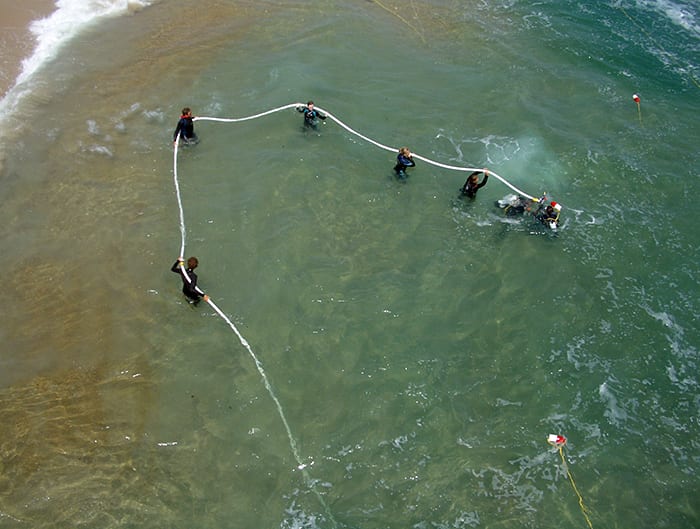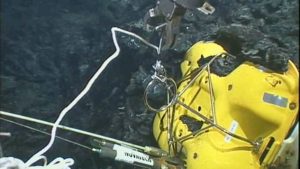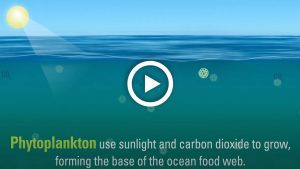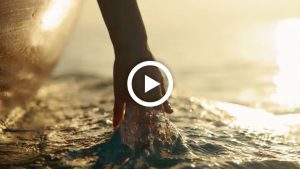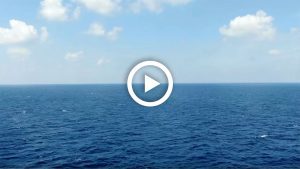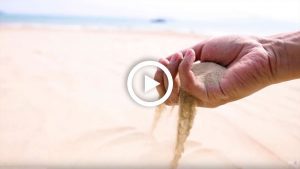MIT-WHOI Joint Program student Melissa Moulton and colleagues in the PV Lab at WHOI undertook an study recently to investigate where and how rip currents form on beaches. They used a landing craft to dredge a 150-foot long, 90-foot-wide channel in shallow water at a research beach in Duck, N.C., to induce the formation of rips. The research team then used a high-pressure hose (pictured) to fluidize sand on the seafloor, so that they could push pipes up to 8 feet into the seafloor. Once the sand re-settled, they attached sensors to the pipes to gather data tracking how rips form. (Photo by Evan Williams, Woods Hole Oceanographic Institution)
Image and Visual Licensing
WHOI copyright digital assets (stills and video) contained on this website can be licensed for non-commercial use upon request and approval. Please contact WHOI Digital Assets at images@whoi.edu or (508) 289-2647.
